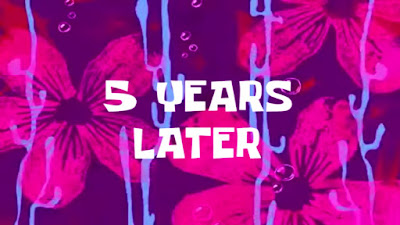I did not want this to be a blog post.
Below is an article I first wrote back at the end of June. I thought this was important, and I submitted it over and over again (six times, I think?), trying to find a bigger venue than my blog to publish it in. No takers.
None of the editors disliked what I had written. Some even agreed it was timely. In a couple of cases, the sticking point seemed to be that I was not a lawyer. (How dare a mere biologist comment on a matter of law?!) But nobody said the analysis below is wrong.
My impression from trying to get this piece published? I feel like both the biological research communities and the science teaching communities are sleepwalking into disaster. The court did a rug pull on teaching evolution. Scientific communities are like cartoon characters after the rug has been pulled out from under them: suspended in mid-air, not realizing that in a moment they are going to come crashing down very hard, very fast.
Anyway, here’s the last version of the article I submitted before accepting its fate was just to be a blog post.
Unless there’s an editor reading this who is interested? (Hope springs eternal, I guess.)
• • • • •
Abstract
For decades, teaching creationism in the United States was ruled unconstitutional because it violated the First Amendment of the US constitution. A recent US Supreme Court decision rejects the legal test that prevented teaching creationism in public classrooms. Educators should expect renewed efforts to insert creationism into public schools.
Keywords: evolution • creationism • Supreme Court of the United States • constitutional law • lawsuits
There is a long history of legal battles over teaching evolution in America. While many might have thought this settled after the Scopes “monkey trial” in 1925 (stirringly – if not always accurately – shown in the play Inherit the Wind and movie adaptations), there have been many legal challenges seeking either to limit instruction of science or to introduce religious concepts into science classrooms. Court rulings have consistently rejected arguments against teaching religion.
But a recent Supreme Court decision opens the path for new legal challenges that might allow the teaching of creationism, intelligent design, young Earth geology, or any number of other religious claims about the natural world.
The Supreme Court case Kennedy v. Bremerton School District (2022) did not concern science education. The issue was a football coach who prayed before his players. The court ruled in favor of the coach. But more important than whether the ruling favors religion is the justification the ruling. In its ruling for the praying coach, the Supreme Court explicitly rejected the so-called “Lemon test,” which had provided the legal footing for rejecting religious instruction in science classes.
The “Lemon test” refers to Lemon v. Kurtzman (1971), a First Amendment case before the Supreme Court. The ruling established a three-part test for whether the state had violated the Establishment Clause of the First Amendment that forbids government from establishing a religion. Actions concerning religion were legal if (1) the rule had a secular purpose, (2) the main effect did not advance any particular religion, and (3) the actions did not excessively entangle the government with religion. All three of these considerations needed to be met for the action to be constitutional.
The Lemon test had been an important consideration three court cases concerning teaching of evolution. Arkansas tried to pass legislation that required evolution and “creation science” get equal time in schools. Maclean v. Arkansas Board of Education (1982) ruled that the law failed the Lemon test and was unconstitutional. That same decade, Louisiana tried to prohibit the teaching of evolution unless it was accompanied by “creation science.” Edwards v. Aguillard (1987) also ruled this as unconstitutional. Most recently, the Lemon test was used again in Kitzmiller v. Dover (2005), the only major court case on “intelligent design” (creationism with references to God stripped away in hopes that it could pass a court case). Intelligent design advocates lost this case resoundingly. The presiding judge described the board’s actions as “breathtaking inanity.” The ruling was so decisively opposed to the Dover School Board’s efforts to introduce intelligent design that it effectively killed all further efforts to introduce intelligent design into schools – until now.
In the Kennedy decision (2022), Judge Neil Gorsuch surprised court observers by claiming that the Supreme Court had “long ago abandoned” the Lemon test. Gorsuch called the Lemon test “abstract, and ahistorical.” Instead, his opinion argues that the Supreme Court should interpret the Establishment clause by “reference to historical practices and understandings.”
The move away from the Lemon test and towards history in the Kennedy decision is consistent with other recent decisions. The Kennedy decision came days after Dobbs v. Jackson (2022), in which the Supreme Court overturned Roe v. Wade, which assured a right to an abortion. Both Kennedy and Dobbs concerned with religious issues, and both were justified by arguments about history and tradition. Critics pointed out that the court’s description of both history and current facts were selective.
The loss of the Lemon test is a precarious moment for science education. Despite a Supreme Court ruling that teaching creationism was unconstitutional, many parents and teachers have tried to insert some creationism into classrooms. People often make no pretense about their efforts: they want their religion taught in public schools. While such efforts were usually not fought in court, science educators were usually confident if they did, they were likely to win. Decades of precedent supported the idea that schools should teach science in science classes.
Science educators should be prepared for a legal system that no longer has their back.
These recent decisions by the Supreme Court confirm that the court is far further to the political right than it has been in decades and seeks to undo civil rights victories of the left. Judge Clarence Thomas wrote a supporting opinion for Dobbs that said that the Supreme Court should revisit cases like availability of contraception and marriage equality.
Conclusion
While the Kennedy decision was not specifically about science education, the loss of the Lemon test should be the writing on the wall for professional scientific and educational societies. Conservative parents, local school boards, and state boards of education have showed time and time again that they are determined and persistent in their efforts to have their religious beliefs taught in public schools alongside, or in place of, established science. Supporters for science education must be prepared for renewed legal battles to push creationism and other religious ideas into classrooms.
References
Kennedy v. Bremerton School District. 2022. https://www.supremecourt.gov/opinions/21pdf/21-418_i425.pdf
Lemon v. Kutzman. 1971. https://tile.loc.gov/storage-services/service/ll/usrep/usrep403/usrep403602/usrep403602.pdf
Maclean v. Arkansas Board of Education. 1982. https://law.justia.com/cases/federal/district-courts/FSupp/529/1255/2354824/
Edwards v. Aguillard. 1987. https://www.loc.gov/item/usrep482578/
Kitzmiller v. Dover. 2005. https://www.documentcloud.org/documents/2426499-kitzmiller-v-dover-decision
Dobbs v. Jackson. 2022. https://www.supremecourt.gov/opinions/21pdf/19-1392_6j37.pdf






